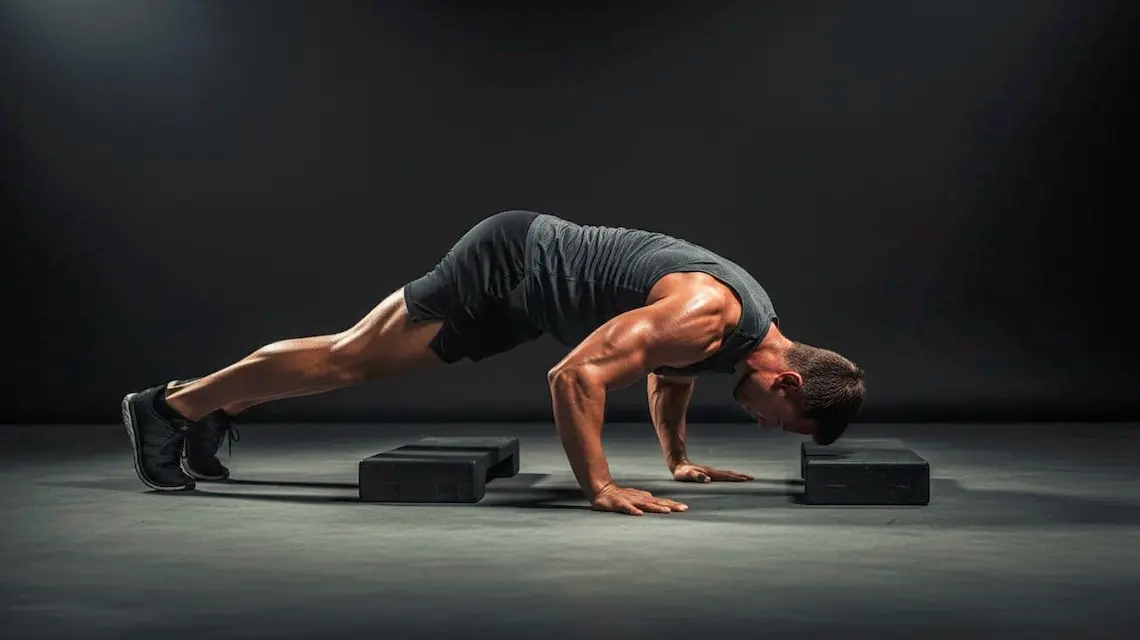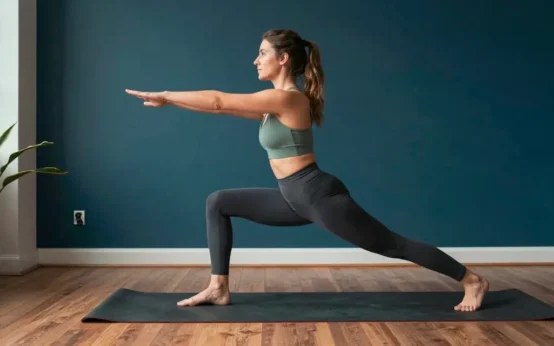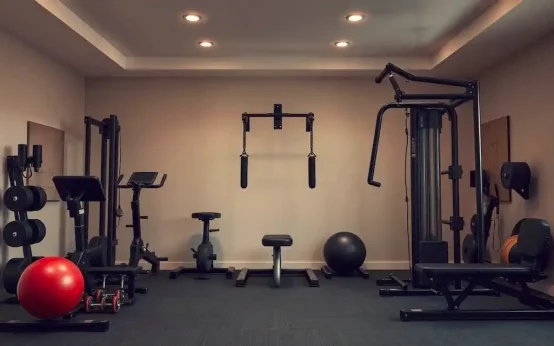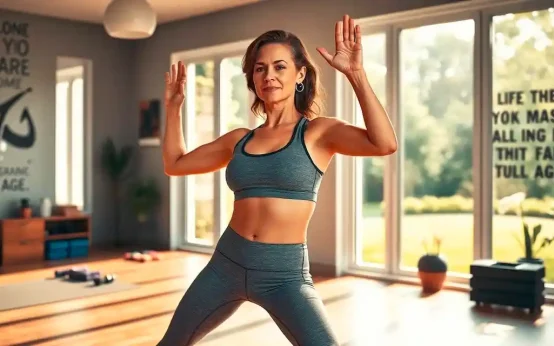Want round, powerful shoulders without a gym? You can do it with a smart deltoid bodyweight exercise plan. Build muscle, improve posture, and add pressing power using simple moves and steady progress at home. You only need a floor, a wall, a sturdy chair or step, and maybe a solid table for rows. That is it. No dumbbells, no machines.
This guide fits beginners and advanced lifters. You will get safe progressions, clear form cues, and a time saving routine. Inside, you will learn quick shoulder anatomy, the best exercises by head, simple progress ladders, a 20 minute plan, and easy safety checks. By the end, you will know exactly what to do next.
Understand Your Deltoids and How Bodyweight Training Builds Them
Your delts are the round muscles that cap your shoulders. They help you push, pull, and raise your arms. When they get stronger, your chest and back lifts often go up too. Balanced delts also protect your neck and help your posture.
Bodyweight training can grow them, if you control angles and tempo. You just need moves that hit the front, side, and rear heads, plus drills that teach the shoulder blades to glide well. Think of your shoulder as a team. The delts do the heavy lifting, while the rotator cuff and scapula muscles direct the movement.
You will build strength by changing leverage, not by adding plates. Raise your feet, get closer to the wall, slow the lowering phase, or pause at the hard point. These tweaks increase tension without equipment. Train near failure with clean form, and you will see growth.
You also need consistency. Two to three focused sessions per week works well for most people. Short sessions add up when you repeat them often. Keep the range full, keep the pace steady, and let each rep teach your body how to move.
Quick deltoid anatomy: anterior, lateral, and posterior heads
- Anterior deltoid (front): raises your arm forward and helps with push moves.
- Lateral deltoid (side): raises your arm out to the side, and gives that wide shoulder look.
- Posterior deltoid (rear): pulls your arm back and out, and balances posture.
Your scapula and rotator cuff guide and control the shoulder. Balanced work across all three heads prevents aches and supports better push ups and presses.
How a deltoid bodyweight exercise plan builds size and strength
- Progressive overload comes from leverage changes, harder angles, slower tempo, and more total reps.
- Use full range and keep time under tension high by lowering for 3 seconds and pausing at the bottom.
- Train close to failure safely, and leave 1 to 2 reps in reserve on most sets.
- Most people grow best with 2 to 3 shoulder focused days each week.
Bodyweight can be enough when you control angles and tempo.
Minimal gear setup at home
Helpful, not required:
- Wall for handstand work and wall slides.
- Floor or yoga mat for comfort.
- Sturdy chair or step for incline or elevated pike work.
- Table or low bar for rows.
Space and safety:
- Clear the area and use a non slip surface.
- If wrists ache, use fists, push up handles, or parallettes.
No table? Do reverse snow angels or prone T Y W work. No chair? Use a couch edge or stairs.
Common mistakes that slow shoulder gains
- Shrugging into your ears and losing scapular control.
- Only training front delts, while skipping rear delts and cuff work.
- Doing tiny half reps, rushing, and ignoring tempo.
- Random workouts with no plan for progress.
- Pushing through pain. Use regressions, rest, and fix form before loading up.
The Best Deltoid Bodyweight Exercises at Home (No Weights Needed)
Pick 1 to 2 moves per head. Rotate options as you gain strength. Keep cues simple and crisp. Push near failure, while keeping your neck long and ribs down.
Front delts: pike push up progressions and wall handstand work
- Incline pike push up (hands on chair). Cue: hips high, head travels forward and down, elbows 45 to 60 degrees.
- Floor pike push up. Cue: keep hips stacked over hands more as you get stronger.
- Feet elevated pike push up. Cue: ramp the height to increase load.
- Wall handstand hold. Cue: ribs down, push the floor away, stack wrists under shoulders.
- Wall handstand shoulder taps. Cue: small taps, slow hips, quiet feet.
- Partial range wall handstand push up. Cue: control down, slight pause, strong press.
- Decline push up to bias front delts. Cue: tuck elbows slightly, slow lower.
Programming: 3 to 4 sets of 6 to 12 reps, or 20 to 40 second holds, near failure with clean form.
Side delts: wide pike variations and side plank abduction
- Wide hand pike push up, hands slightly wider than shoulders, for abduction demand.
- Elevated wide pike push up to load the side delts more.
- Side plank hip lift with top arm straight up. Progress to side plank top arm abduction pulses against the wall.
- Wall lateral raise isometric. Forearms on wall, push out into the wall for 20 to 30 seconds.
Programming: 3 sets of 8 to 15 reps or 20 to 30 second holds. Keep the neck long and do not shrug.
Rear delts: floor reverse fly patterns and bodyweight rows
- Prone T, Y, W raises on the floor. Lift for 2 to 3 seconds, thumbs up for Y, palms down for T.
- Reverse snow angels. Sweep arms from hips to overhead without shrugging.
- Inverted row under a sturdy table or low bar. Use a wide overhand grip, pull elbows out to hit rear delts. Regress by bending knees.
Programming: 3 to 4 sets of 8 to 15 reps. Pause 1 second at the top. Keep ribs down.
Scapular control and rotator cuff drills for stronger shoulders
- Scap push ups. Straight arms, protract and retract without elbow bend.
- Wall slides with lift off. Forearms on wall, slide up, then lift off slightly.
- Prone external rotation with elbows at sides. Light range, slow tempo.
- Quadruped shoulder taps. Move slow and quiet.
Programming: 2 to 3 sets of 8 to 12 reps or 20 to 30 seconds. Focus on smooth control.
Progressions, Programming, and a 20 Minute Deltoid Bodyweight Workout
A good plan gets you stronger week to week. Change one variable at a time, track your best sets, and keep your form sharp. Below is a simple road map.
Progressions from beginner to advanced you can follow
Front delts ladder:
- Incline pike push up, then floor pike, then feet elevated pike, then wall handstand hold, then partial wall HSPU, then full wall HSPU.
Side delts ladder:
- Side plank hold, then side plank hip lifts, then side plank abduction pulses, then wide pike elevated, then archer style pike.
Rear delts ladder:
- Prone T Y W, then reverse snow angels, then table row knees bent, then table row legs straight, then feet elevated row.
Progress by one variable at a time: angle, range, tempo, or reps.
Sets, reps, tempo, and rest for size or strength
- Hypertrophy: 3 to 5 sets of 6 to 12 reps, tempo 3 down, 1 pause, 1 up. Rest 60 to 90 seconds. Stop with 1 to 2 reps in reserve.
- Strength on handstand push patterns: 4 to 6 sets of 3 to 6 reps, or 20 to 30 second hard holds. Rest 90 to 150 seconds.
- Endurance and joint health: 2 to 3 sets of 12 to 20 reps on rear delts and cuff work.
- Weekly frequency: 2 to 3 deltoid focused sessions with at least 48 hours between hard days.
A fast 20 minute deltoid bodyweight exercise routine and weekly plan
Warm up, 2 minutes:
- Arm circles x 20 each way, small to big.
- Scap push ups x 10.
- Wall slides x 8.
Circuit, 3 rounds, about 5 minutes per round:
- Pike push up or wall HSPU x 6 to 10.
- Side plank abduction x 8 to 12 per side.
- Prone T Y W complex x 10 total.
- Scap push ups x 12.
Rest 60 seconds between rounds.
Optional finisher:
- Wall handstand hold 20 to 30 seconds, then slow reverse snow angels x 8.
Weekly plan:
- Day 1 push focus, Day 3 pull and rear delts, Day 5 mixed deltoid circuit. Add light cuff work on two other days if joints feel good.
Form Tips, Warm Up, and Shoulder Health
You do not need a long routine to feel ready. Keep it short, simple, and consistent. Clean reps beat sloppy volume. Protect your joints and you will gain faster.
A quick shoulder warm up you will actually do
2 to 4 minute flow:
- 20 arm circles each way, small to big.
- 10 scap push ups.
- 8 wall slides, slow.
- 20 second doorway pec stretch per side.
Breathe through your nose if you can. Keep your neck relaxed.
Simple form cues that boost deltoid activation
- Pack shoulders down slightly, do not shrug.
- Ribs down, neutral neck, eyes on the floor for pike moves.
- Elbows 45 to 60 degrees on push patterns.
- Press hands like you are screwing jars to create external rotation.
- Move slow on the way down, pause, then press with intent.
Recovery, training frequency, and when to add more challenge
- Rest 48 hours between hard deltoid sessions. Light cuff work can be done more often.
- Sleep 7 to 9 hours, eat enough protein, and hydrate.
- Add challenge by raising feet, moving closer to the wall, slowing tempo, or adding an extra set.
- If all sets hit 12 clean reps, progress the leverage next session.
Pain check: what to modify and when to see a pro
- Front shoulder pinch: reduce range, swap decline push ups for floor pike, add more rear delts and cuff.
- Top of shoulder ache: avoid deep shrugs, keep elbows 45 to 60 degrees, use slower tempo.
- Sharp pain or numbness: stop and see a licensed medical professional.
- Always warm up and use regressions when form breaks.
Conclusion
Stronger shoulders do not need fancy gear. Pick 1 to 2 moves per head, train 2 to 3 days per week, use slow tempo and clean form, and progress angles over time. The right deltoid bodyweight exercise plan can add size, power, and posture at home. Try the 20 minute routine for two weeks and track reps or hold times. Small, steady wins stack up fast when you stay consistent.
Related post:
- Diastasis Recti Exercises: A Safe, Step-by-Step Plan
- Mindfulness and Breathing Exercises
- Gentle Yoga for Beginners
Shoulder Strength FAQs: Bodyweight Moves for the Deltoids
What are the deltoids, and why do they matter?
Your deltoids are the shoulder muscles. They have three heads, front, side, and rear. Strong delts improve pressing, pulling, posture, and arm stability during daily tasks and sport.
Can I build my shoulders using only bodyweight?
Yes. You can gain size and strength with smart progressions. Focus on vertical pressing, angle changes, and tempo. Eat enough protein and train with intent.
Which bodyweight exercises hit the front delts best?
Try pike push-ups, wall-assisted handstand push-ups, and decline push-ups. Pseudo planche push-ups shift load forward, which increases front delt work.
How do I target the side delts without weights?
Use archer pike push-ups, leaning lateral raises with a towel on a slick floor, and wall lean lateral raises. Increase time under tension and range.
What about the rear delts?
Add reverse plank raises, prone Y and T raises, and face-pull slides on a towel. Ring or suspension rows with elbows flared also help.
What’s a solid beginner routine for delts at home?
- Pike push-ups, 3 sets of 6 to 10
- Elevated pike push-ups, 3 sets of 5 to 8
- Prone Y raises, 3 sets of 10 to 15
- Side plank, 2 sets of 20 to 30 seconds each side
Rest 60 to 90 seconds. Train 2 to 3 days per week.
How do I progress once that feels easy?
Increase range, elevation, or body angle. Slow the lowering phase to 3 to 5 seconds. Add partials or pauses at the bottom. Move to wall handstand holds, then handstand push-up negatives.
How often should I train shoulders?
Two to three times per week works well. Leave at least one rest day between hard sessions. Total 10 to 16 tough sets per week for growth.
What rep range should I use?
Use 5 to 10 reps for strength and 8 to 20 for size. Go close to failure, with 1 to 2 reps in reserve. Control each rep.
How do I warm up my shoulders before pressing?
Spend 5 minutes. Do arm circles, scapular wall slides, and band pull-aparts if you have a band. Add easy pike push-ups before hard sets.
How can I make handstand work safer?
Use a wall, set hands shoulder-width, and stack wrists, elbows, and shoulders. Keep a tight core and glutes. Start with holds, then negatives, then partial reps.
What if I feel shoulder impingement or front pain?
Stop painful moves. Switch to a higher incline, wider pike stance, or neutral-grip rows on rings. Strengthen rotator cuff with side-lying external rotations and band work. If pain lingers, see a clinician.
Do I need equipment for bodyweight shoulder training?
No, but small tools help. A wall, yoga blocks, sliders or towels, and a band or rings expand options and progressions.
How do I hit all three heads in one session?
- Vertical press, pike or handstand push-ups
- Lateral pattern, leaning lateral raises or archer pike
- Rear delt, prone Y or ring face pulls
Finish with a long isometric hold, like a wall handstand.
What are common mistakes to avoid?
- Flaring elbows without control
- Shrugging up and losing space for the shoulder
- Rushing negatives
- Skipping rear delt and cuff work
- Jumping to freestanding handstands too soon
How can I train shoulders if space is tight?
Use wall handstand holds, pike push-ups on a chair, prone Y and T raises on the floor, and side planks. All need minimal room.
Can tempo and isometrics boost gains?
Yes. Slow eccentrics, 3 to 5 seconds, increase tension. Mid-range holds build strength at weak points. Try 20 to 30 second wall handstand holds.
How long before I see results?
Expect strength changes in 2 to 4 weeks, visible size in 6 to 12 weeks. Progress your angle, keep intensity high, and eat enough.
What’s a sample intermediate session?
- Elevated pike push-ups, 4 sets of 6 to 8
- Wall handstand push-up negatives, 3 sets of 3 to 5
- Leaning lateral raises, 3 sets of 10 to 15
- Prone T raises, 3 sets of 12 to 15
- Wall handstand hold, 2 sets of 20 to 40 seconds
How do I protect my wrists and elbows?
Warm up wrists with circles and palm rocks. Stack joints, avoid hyperextending elbows, and use parallettes or push-up handles if needed. Keep volume increases modest, about 10 percent per week.




 Beginner Cardio Workout at Home
Beginner Cardio Workout at Home  10 Stretching Exercises to Increase Height
10 Stretching Exercises to Increase Height  Menopause Workout: A Simple, Strong Plan
Menopause Workout: A Simple, Strong Plan  Best Home Gym Workout Equipment
Best Home Gym Workout Equipment  Exercise Tips Help You Look Great for Your Age
Exercise Tips Help You Look Great for Your Age  How to Stay Active With Back Pain
How to Stay Active With Back Pain